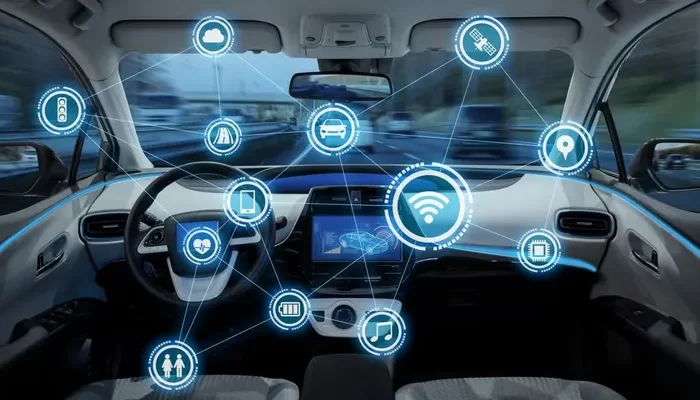Cars Become Even More Connected

Most car functions today are run by software. For instance, Tesla owners are familiar with software updates that do much more than just add new entertainment services.
These updates provide a steady stream of data. And this data can reshape our lives and businesses. For example, a car can alert drivers of service needs.
Driver Assistance
The emergence of V2X communication allows cars to relay information digitally with infrastructure and other vehicles (road signs, traffic signals). This data can help inform drivers (such as being rerouted to less congested roads during high traffic periods) and help improve road infrastructure (by giving engineers better visibility into road conditions).
Many connected car manufacturers have advanced driver assistance systems that automate some aspects of driving. These include lane-keeping assistance that centers the vehicle within its own lane, hands-free steering that allows brief hands-off driving and even some systems that communicate with emergency services automatically in the event of a crash, saving response times and potentially lives.
These systems are typically either embedded in the vehicle or, as with Apple CarPlay and Android Auto, offered on a pay-as-you-go subscription basis. A more recent development is the ability for a connected car to monitor its own system performance and alert you when it might need service, saving time and money by reducing the need for routine inspections.
Entertainment
Cars are true innovation hotspots, with a plethora of features that help improve the driving and travel experience. As such, they are becoming mobile computational units that collect and communicate information all the time. Increasingly, they can also be updated with new software features over the air, much like a smartphone. Tesla is the poster child for this, with updates rolling out on a weekly basis that include more than just bug fixes.
Many manufacturers are incorporating Apple Car Play and Android Auto, which allow smartphones to be used as navigational, entertainment and communication systems. This enables users to connect to streaming services, for instance. Virtual reality start-up Holoride is one company enabling cars to become immersive gaming pods. Other companies are inputting car data into maps to help drivers find parking spots or avoid congestion. In addition, wireless operators are able to provide in-vehicle internet access via cellular networks embedded in cars. This allows them to offer services that generate incremental revenue from car-level data.
Safety
A car’s telecommunication systems allow it to share information with other vehicles and traffic infrastructure, enabling it to identify potential hazards or dangerous road conditions. It can also communicate with emergency services automatically in the event of an accident, reducing response times and potentially saving lives.
IoT sensors in CCTV cameras and along highways and bridges constantly collect data, identifying congestion points, rerouting traffic and predicting future problems. When these systems are connected to cars, they can provide intelligent route planning and even alert drivers to slow down ahead of a car ahead of them slamming on the brakes.
In addition, a car’s telecommunication system can share performance and diagnostic data with fleet managers. This enables them to remotely monitor and track the vehicle, streamlining maintenance, preventing downtime and minimizing costs. A cloud-based platform can surface this data to help fleets improve safety, efficiency and sustainability across their entire network. Then they can deliver a more personalized, comfortable and safe experience for their customers.
Connectivity
As cars become smarter, connectivity features are evolving to include e-commerce, navigation and concierge services. They can connect to a city’s network to help you find parking, locate a business or residence and avoid areas with construction or congestion.
As the vehicle-to-everything (V2X) technology evolves, drivers will be able to communicate with traffic infrastructure, other vehicles and even the cloud system to help improve road safety and traffic flow. This will be accomplished through embedded systems that are built into the car, or tethered systems that utilize external devices like smartphones to provide connectivity and features.
These changes offer new opportunities for carmanufacturers and their business partners, but also pose challenges as the industry works to monetize the value of this data. As we move toward more connected cars, privacy concerns must be addressed so customers know what information is being collected and how it’s used. In addition, security systems must be redesigned to protect against cybercrime.